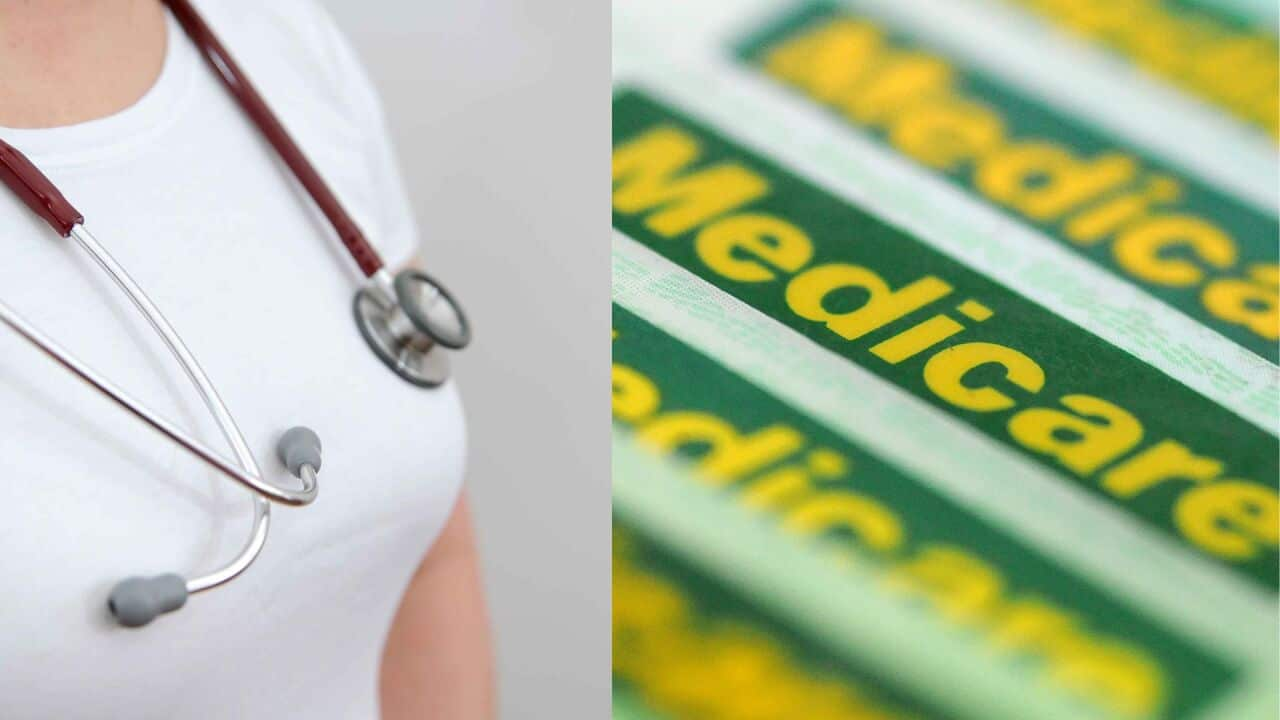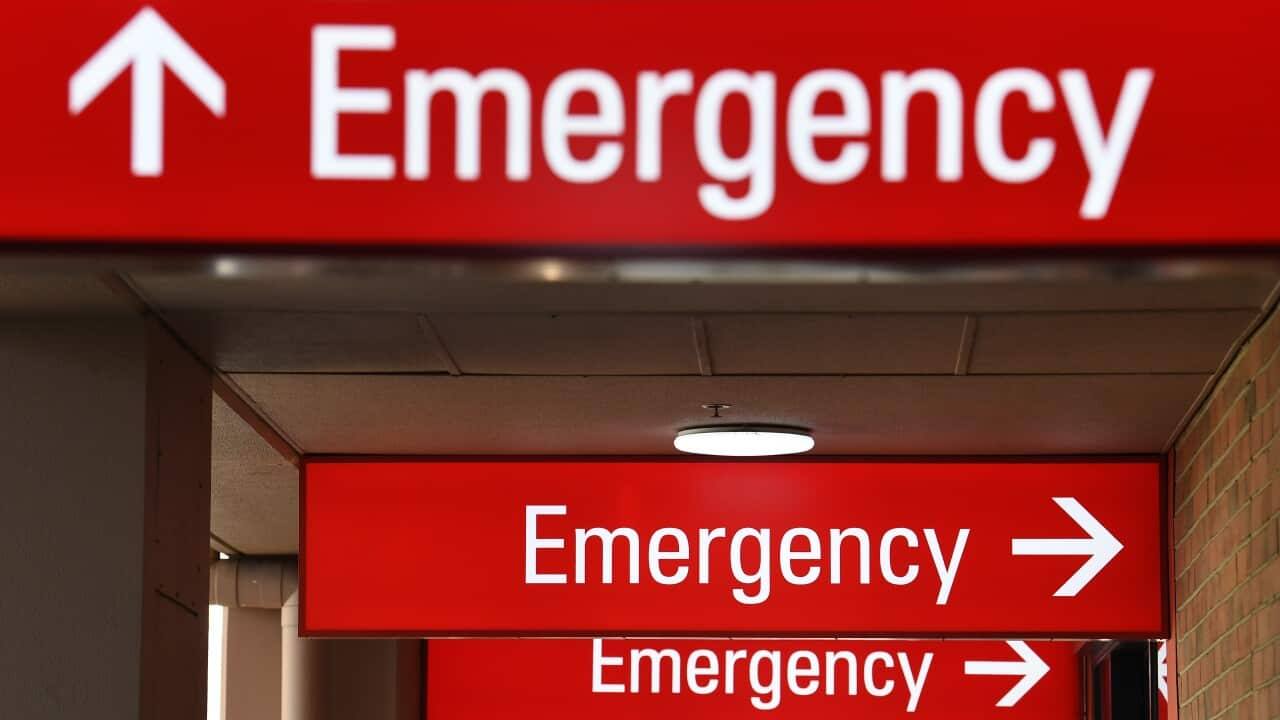Key Points
- 87 per cent of Australian electorates saw fewer bulk-billing clinics last year, a new report found.
- According to directory Cleanbill, out-of-pocket costs surged in the majority of electorates.
- That differs from the government's data which shows an increase in the number of GP clinics offering bulk billing.
The number of Australian electorates with GPs that bulk bill appears to be shrinking.
That's according to a new report that found that while some areas saw gains in bulk-billing clinics, a staggering 87 per cent experienced losses, with nine electorates now completely devoid of bulk-billing GP services.
Released by the online healthcare directory Cleanbill on Sunday, the data unveiled the stark changes in bulk-billing rates and out-of-pocket costs for GP consultations across Australia in 2023.
One in six of Australian electorates saw a decrease in bulk-billing last year, with nine electorates now having no available bulk-billing GPs, according to the report.
That's higher than the four electorates the year prior where there were no available bulk-billing GPs at all.
The 2024 report compared information from the 2023 Cleanbill report, .
Cleanbill founder James Gillespie told SBS News that the decline in some electorates was "absolutely unbelievable".
"In certain electorates like Cook in NSW and Burt in Western Australia, there was almost a 50 percentage point drop in bulk billing amongst GP clinics over just the course of 2023," he said.
In Tasmania, three electorates had no GPs that bulk billed — Bass, Braddon, Franklin, and Clark. There were three in NSW — Cowper, Lyne, and Shortland — with the remaining were Fairfax in Queensland and Jagajaga in Victoria.
Fifteen electorates had only one bulk-billing GP clinic.
The nine electorates with the highest bulk-billing rates, above 75 per cent, were all located in western Sydney.

Breakdown – 2023 Bulk Billing Rate Change. Credit: Cleanbill, Electorate Breakdown Report.
Some patients are paying more to see the GP
According to the report, out-of-pocket costs grew in the majority of electorates, some as much as 15 per cent of the average fee within a year.
In Queensland's Groom, a standard consultation with a GP costs an average of $40 out-of-pocket, which is a $6.35 increase from one year ago.
At the same time, GP clinics in Cooper, Victoria now charge their patients an average out-of-pocket fee of $36.64 for standard consultations, compared to $40.45 a year ago.
With the variety in out-of-pocket costs across Australia, Gillespie said it’s important to have easy access to availability and pricing information for every clinic.
He said around a quarter of GP clinics didn't have a website and those that did, very few of them displayed their pricing information online. Even fewer displayed online if they taking on new patients.
"What we see at the moment is that finding a GP in your community and finding pricing and accessibility information for them can be really, really difficult," he said.
According to the latest data from the Australian Bureau of Statistics (ABS), in order to cut costs.
In 2022-23, the proportion of people who reported cost as a reason for delaying or not using GPs doubled to seven per cent compared to three-point-five per cent in 2021-22.
Gillespie said the lack of accessibility when it came to cost information for GP clinics had a massive effect on people's ability to see a medical professional near them.
It was an even greater issue for people from culturally and linguistically diverse (CALD) communities.
"You've got to individually call each clinic up to find out their pricing information, their availability information, and see if they're taking on new patients if they're able to bulk bill you and that's really, really difficult," Gillespie said.
"It becomes even more challenging for those communities with language barriers."
Why is this data different from the government's data?
Cleanbill's data is calculated by finding the percentage of clinics in Australia that bulk bill an adult during normal business hours for a standard consultation. That differs from the government's data, which assesses all services accessed by a GP.
Unless further broken down, this figure did not differentiate between age groups, concession status and item number — all of which can affect whether a service is bulk billed, Cleanbill said in its report.
Health Minister Mark Butler defended Medicare at a press conference last month, citing an improvement since the government tripled the bulk billing incentive for doctors in November.
"In the last two months since that money started to hit general practices, we've also seen an increase in bulk billing. In November and December alone, just two months, there were 360,000 additional free visits to the doctor,' he said at the time.

Health Minister Mark Butler said the extra financial incentives were making a difference for clinics and patients. Source: AAP / Mick Tsikas
The Australian Medical Association said Cleanbill's report did not provide the full picture of bulk billing rates in Australia.
"The federal government's significant down payment of around $6 billion for primary care in last year's budget is already showing signs of promise, with statistics released at the start of this month showing the decline of bulk billing rates in general practice has been arrested," AMA President Steve Robson said.













